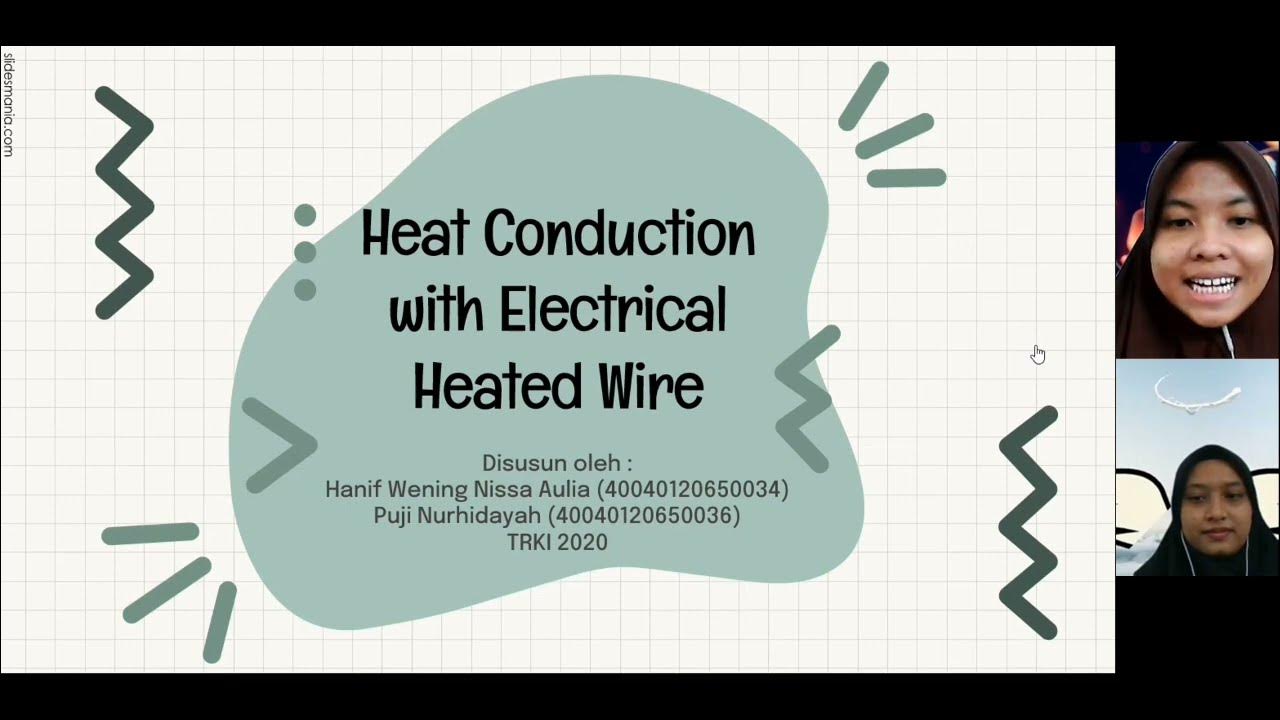Modul 5. Pengujian Cross Flow Heat Exchanger
Summary
TLDRThis transcript outlines a series of experiments designed to study heat transfer and airflow dynamics in a controlled environment. The process involves measuring pressure loss, airflow speed, and temperature changes in an apparatus with fans, heat exchangers, and aluminum rods. The procedure includes various trials with differing air pressure settings and monitoring of heat dissipation at different positions. Data is recorded at specific intervals to calculate heat loss and transfer coefficients. The ultimate goal is to analyze the efficiency of the heat transfer system and identify key factors influencing performance.
Takeaways
- 😀 The experiment focuses on airflow and heat transfer using a mechanical system with fans and temperature sensors.
- 😀 The purpose of the first experiment is to determine the pressure loss caused by airflow through the system.
- 😀 The experiment measures the speed of airflow at different points using devices like an air blower and motor.
- 😀 Data collection is performed by recording the pressure values at two points (P1 and P2) during different airflow settings.
- 😀 The airflow rate is adjusted by varying the valve settings from 100% to 30% to observe pressure changes.
- 😀 In subsequent experiments, the aluminum rods are arranged to measure heat loss and determine the fastest cooling spots.
- 😀 The primary goal of the heat transfer experiment is to calculate the heat transfer coefficient and temperature changes over time.
- 😀 The procedure includes turning on the fan, noting the temperature readings at regular intervals, and then switching off the fan after each test.
- 😀 The experiment involves testing different configurations of aluminum rods in the work area to identify heat transfer patterns.
- 😀 After completing the experiment, all equipment should be turned off to conclude the procedure and ensure proper data recording.
Q & A
What is the purpose of the experiment described in the transcript?
-The purpose of the experiment is to measure pressure loss, velocity, and heat transfer in a system using specific equipment such as a heat exchanger, fans, and pressure sensors.
What equipment is used in the experiment?
-The equipment used includes a crossflow heat exchanger, fans, motor, pressure sensors (P1 and P2), and an instrumentation unit.
What is the significance of determining pressure loss in the experiment?
-Determining pressure loss helps to understand the efficiency of the system, how much energy is dissipated, and the performance of the components involved, particularly in terms of fluid dynamics.
Why is the air valve adjusted to different percentages (100%, 90%, 80%, etc.) in the experiment?
-Adjusting the air valve to different percentages allows the experimenters to observe how changes in airflow affect pressure, velocity, and heat transfer in the system.
What does the procedure of 'recording data at intervals of 10 seconds for 2.5 minutes' achieve?
-This procedure helps in collecting real-time data on temperature and pressure changes, allowing for an analysis of how the system responds over time.
What role does the fan play in this experiment?
-The fan circulates air through the system, influencing the heat transfer and pressure dynamics. It is also used to control the flow rate and is crucial in the measurement of pressure loss.
What does the term 'koefisien perpindahan panas' (heat transfer coefficient) refer to in the experiment?
-The heat transfer coefficient refers to the rate at which heat is transferred between the fluid and the surfaces, which is a key factor in determining the system's thermal performance.
Why is one aluminum rod left in the middle position during the experiment?
-Leaving one aluminum rod in the middle position ensures that specific data about heat transfer and temperature distribution in that area is collected, which helps in understanding how heat moves through the system.
How does the temperature measurement at 340 Kelvin relate to the experiment?
-The temperature of 340 Kelvin is likely set as a baseline or target condition for the experiment. It ensures that the system reaches a specific thermal state before data collection begins.
What is the ultimate goal of the experiment in terms of heat transfer and efficiency?
-The ultimate goal is to determine how heat is transferred within the system, identify the areas of the system that lose the most heat, and calculate the heat transfer coefficient to assess the system's efficiency.
Outlines

Этот раздел доступен только подписчикам платных тарифов. Пожалуйста, перейдите на платный тариф для доступа.
Перейти на платный тарифMindmap

Этот раздел доступен только подписчикам платных тарифов. Пожалуйста, перейдите на платный тариф для доступа.
Перейти на платный тарифKeywords

Этот раздел доступен только подписчикам платных тарифов. Пожалуйста, перейдите на платный тариф для доступа.
Перейти на платный тарифHighlights

Этот раздел доступен только подписчикам платных тарифов. Пожалуйста, перейдите на платный тариф для доступа.
Перейти на платный тарифTranscripts

Этот раздел доступен только подписчикам платных тарифов. Пожалуйста, перейдите на платный тариф для доступа.
Перейти на платный тарифПосмотреть больше похожих видео
5.0 / 5 (0 votes)






